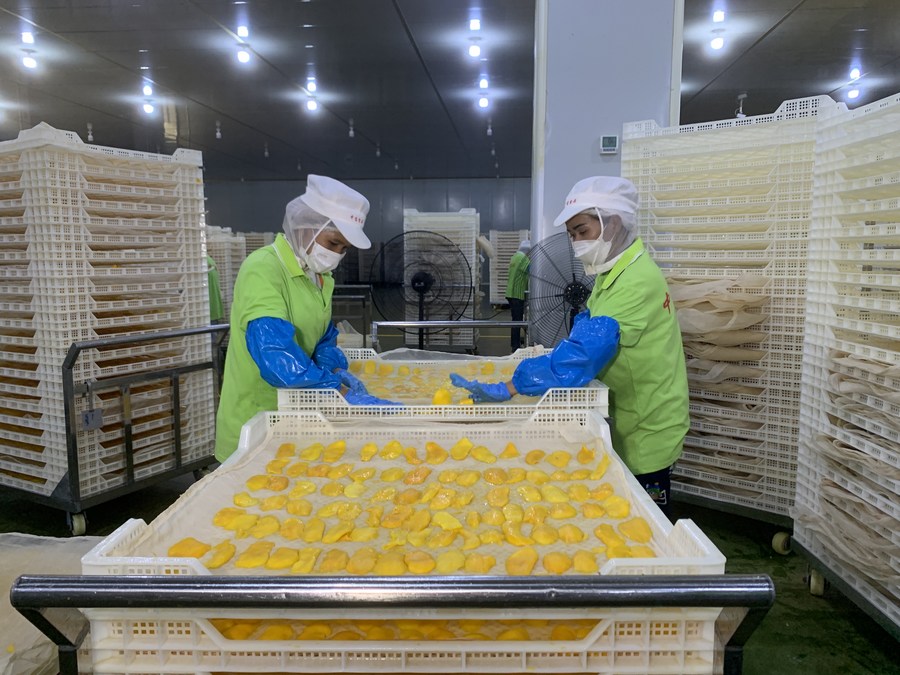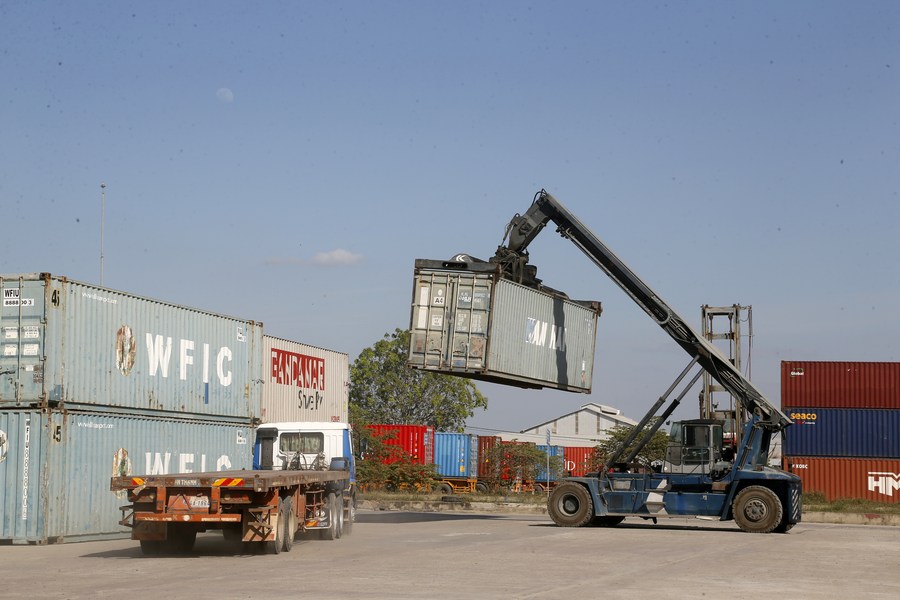RCEP, FTAs to help Cambodia attract more FDIs, boost exports

Workers prepare ripe mango slices at the Zhong Bao (Cambodia) Food Science & Technology Co., Ltd. in Kampong Speu province, Cambodia on March 7, 2023. (Photo by Van Pov/Xinhua)
"On the back of the implementation of the RCEP agreement and other bilateral FTAs, Cambodia is expected to attract more FDI inflows and expand its exports to the region."
PHNOM PENH, May 21 (Xinhua) -- The Regional Comprehensive Economic Partnership (RCEP) agreement and bilateral free trade agreements (FTAs) are expected to help Cambodia attract more foreign direct investment (FDIs) and boost its exports, National Bank of Cambodia's Governor Chea Serey said here on Monday.
Cambodia is a member of the RCEP agreement that engaged with 15 Asia-Pacific countries, and the kingdom also has bilateral FTAs with China, South Korea and the United Arab Emirates.
"On the back of the implementation of the RCEP agreement and other bilateral FTAs, Cambodia is expected to attract more FDI inflows and expand its exports to the region," she said in a speech during the opening ceremony of a seminar on Cambodia's financial stability.
These trade pacts will help boost Cambodia's productivity and promote its economic diversification, Serey said, adding that the kingdom's economy is forecast to grow 6 percent in 2024, up from 5 percent in 2023, driven by a rise in exports, recovery in tourism, robust growth in transport and communication, and flat growth in agriculture.

A crane truck lifts a container at the Hong Leng Huor Dry Port on the western suburb of Phnom Penh, Cambodia on Jan. 13, 2022. (Photo by Phearum/Xinhua)
Cambodia approved the fixed asset investment of 2.5 billion U.S. dollars in the first four months of 2024, which will create approximately 130,000 jobs, said a government's report.
On the trade side, the Southeast Asian country exported products worth 8 billion dollars during the January-April period this year, up 15.2 percent from 6.94 billion dollars over the same period last year.
The Cambodian Ministry of Commerce's Secretary of State and Spokesperson Penn Sovicheat said the RCEP agreement and bilateral FTAs will help Cambodia realize its ambitious goals of becoming an upper-middle income country by 2030 and a high-income nation by 2050.
"These trade pacts have not only given a boost to Cambodia's sustainable trade growth in the long run, but also become a magnet to attract more FDIs to the kingdom," he told Xinhua.
RCEP comprises 15 Asia-Pacific countries including the 10 ASEAN (the Association of Southeast Asian Nations) member states of Brunei, Cambodia, Indonesia, Laos, Malaysia, Myanmar, the Philippines, Singapore, Thailand and Vietnam, and their five trading partners, namely China, Japan, South Korea, Australia and New Zealand.
Kin Phea, director general of the International Relations Institute of Cambodia, a think tank under the Royal Academy of Cambodia, said besides these free trade agreements, China's Belt and Road Initiative has laid a solid foundation for Cambodia's socioeconomic development in the long term.
"Under the BRI framework, China has heavily invested in infrastructure projects such as highways, bridges, expressways, hydropower plants, special economic zones, seaports, and airports," he told Xinhua. "These BRI flagship projects have significantly impacted Cambodia's development agenda, brought opportunities for Cambodia to get rid of poverty, and promoted mutual benefit and win-win results, which are deeply rooted in the hearts of the people."
Phea said these large-scale projects have greatly contributed to promoting connectivity, securing the sustainable source of electricity supply, enhancing economic competitiveness, diversifying sources of growth, and reducing logistics costs in Cambodia.
"Among flagship projects in Cambodia under the BRI, I have been impressed by the Sihanoukville Special Economy Zone, the Phnom Penh-Sihanoukville Expressway and the Siem Reap Angkor International Airport," he said.


